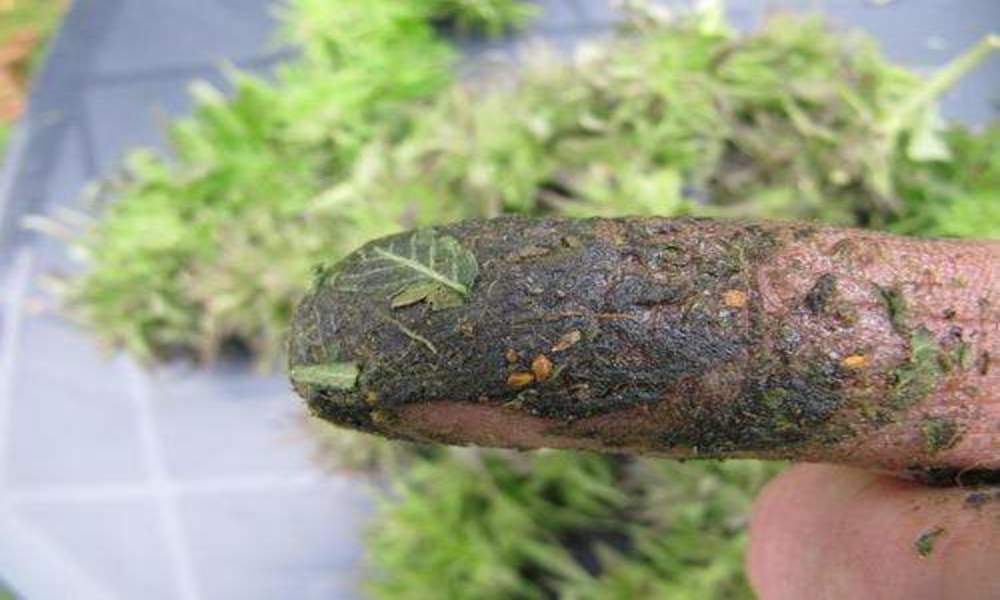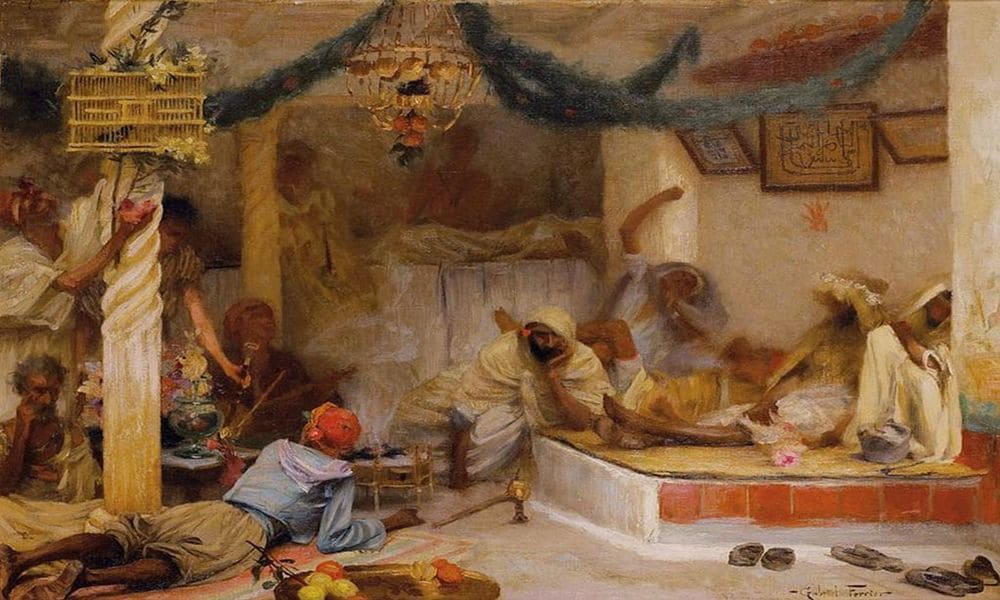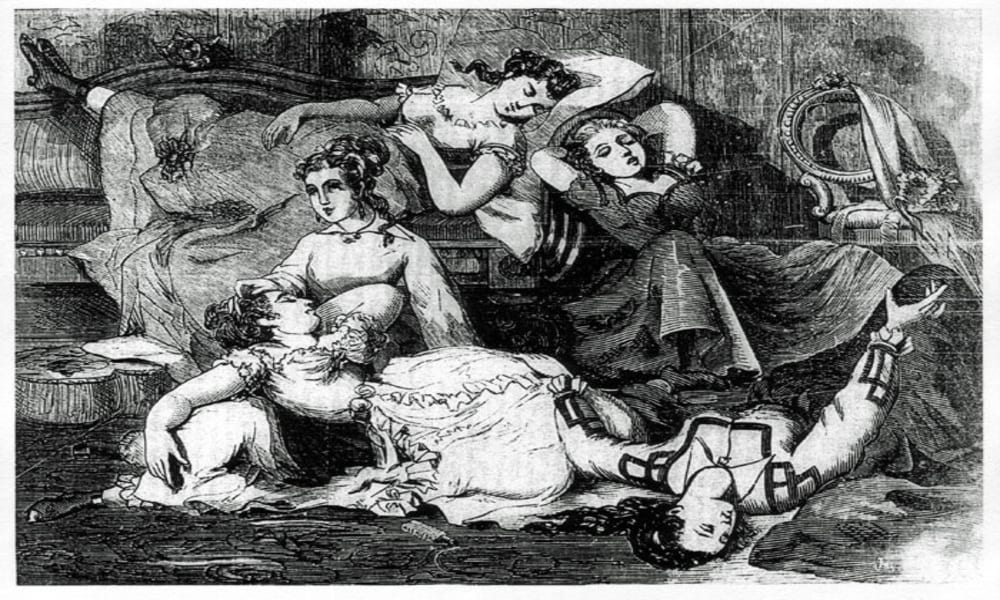
Hashish: The History Of Hash And Humans
The history of hashish is as rich and dense as the levels of THC in the product itself. Where did it come from? Where is it going?
You’ve probably heard of hash, and you may have even smoked it, but have you ever stopped to think about the history of hash? Luckily, we have. Without further ado, here’s your brief and condensed history lesson on hashish.
What is Hashish?

Hashish is a natural substance derived from cannabis. Unlike weed, which is the flower form of smokeable cannabis, hashish refers to the extracted and compressed resin, or trichomes, of the cannabis plant. Because of the compressed and often purified form, it has a much higher concentration of THC (and other cannabinoids) than the bud that one would typically smoke.
Hashish, or hash as it’s often called, can be smoked using a pipe, a bong, or a vaporizer. You can also roll it into a joint, but in this form, it can’t burn by itself; it must be rolled with either tobacco or weed.
The History of Hash

The history of hash is very similar to the history of cannabis as a whole. This could be, in part, due to the fact that the cannabis plant has a wide variety of uses. Ancient civilizations used the hemp from the cannabis plant to make paper, rope, and other useful goods. The cannabis plant has also historically been used by different civilizations as a potent medicine to treat everything from rheumatism to cataracts.
In fact, the first recorded use of cannabis as medicine dates back to 2737 BCE, by the Chinese emperor Shen Neng.
Ancient History

Although the use of cannabis dates back thousands of years, the specific history of hash is fairly recent. Of course, we’re using the term “recent” quite loosely.
Historians speculate that the production and use of hashish had been occurring for thousands of years. Around 900 AD, its use began to spread throughout the Arabia. And in Northern India, the form of hash known as Charas, which is hand made, had been around for even longer.
From 1090- 1124, Persian mystic, missionary, and murder expert, Hassan-e Sabbah, reportedly trained an order of assassins using hashish. In the late 1200’s, Marco Polo brought these second-hand tales back to Europe. It was the first time that Europeans had heard of cannabis.
Around the 12th Century, it became increasingly popular in the Middle East.
In the collection of stories 1001 Nights, hash is central to “The Tale of Two Hashish-Eaters.”
In 1596, the Dutch merchant and historian Jan Huyghen van Linschoten wrote three pages about bhang and hashish in his account of his travels throughout the East.
Between 1600 and 1700, it became a major source of trade between South Asia and Central Asia.
The 19th Century

In the 1800’s, Europe’s literary circles embraced hash with gusto. The most famous instance of this was the Club des Hashischins in Paris, France. Luminaries such as Charles Baudelaire, Victor Hugo, and Alexandre Dumas populated this club.
Meanwhile, in the 1840’s, in America, cannabis-based medicine began to hit the shelves. In Persia, hash could be purchased at pharmacies. And in France, two texts on the subject were published. The first, in 1843, was titled The Hashish Club and was written by Théophile Gautier. In 1846, Dr. Moreau ‘de Tours published Hashish and Mental Illness.
During the last decades of the 1800’s, reports of hash use in Greece began to emerge. Subsequently, Both Greece and Turkey made it illegal.
In 1869, doctors in Germany began using it as an anesthetic.
Modern History of Hash
In the 20th century, the cannabis industry began to face threats.
During the 1920’s, the Greek dictator Ioannis Metaxas organized a crackdown on hash. Think of him as an early Greek Rudy Giuliani. The crackdown, predictably, led to a booming black market for smugglers.
Also in the 1920’s, Lebanon outlawed hash. In Britain, recreational cannabis became a prohibited substance.
And of course, in the 1930’s, the United States of America started a feverish anti-cannabis crusade.
1960’s-1980’s: The Groovy History of Hash

In 1965, farmers began to grow Cannabis Afghanica for the sole purpose of hash. This production took place in northern Afghanistan. Two years before that, the Turkish police force seized 2.5 tons of hashish.
In 1967, the hash strain Red Lebanese made its way to California, which, incidentally, was the first state to outlaw weed. Also in 1967, users saw the first variety of hash oil, called “Smash.”
In the early 1970s, Afghanistan saw a boom in hash production. North America, in turn, received more and more types of hash. As a result, the Afghani police introduced anti-hashish law enforcement efforts.
In the 1980s, Morocco became one of the world leaders in hashish production and distribution. By 1987, anti-hashish efforts by the government began.
In 1995, locally produced hashish sprung up in Amsterdam coffee shops.
Meanwhile, violence between different religious groups interrupted the hashish trade in Afghanistan.
Hashish Today

The history of hash is like the history of weed. It’s always changing and it’s always evolving. As we become more comfortable with cannabis, we’re able to dive deeper into the history behind it and gain a better understanding of where we are today in terms of use and legality.
We might even be able to get a better understanding of where we are a species.
In 1977, Carl Sagan theorized that cannabis was the world’s first agricultural crop. If that were true, then cannabis was instrumental in the shaping of human civilization as we know it.
Today, western Europe consumes a huge amount of hashish. In 2013, 641 tonnes of hashish were consumed in the European Union. Anecdotally, hash is reported to be more popular among European cannabis users than cannabis flowers are.
As legalization in the United States becomes more widespread, it’s reasonable to predict that hashish use will increase among cannabis users. It’s the same plant, just in a different form. After all, a rose by any other name would smell as sweet.

























